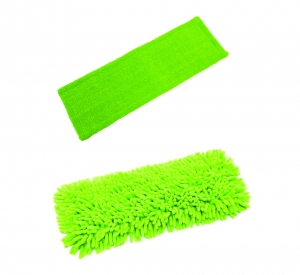Home › Blog › Resin floor cleaning tips
Resin floor cleaning tips
Why is floor maintenance important?

A floor is one of the most heavily used of all surfaces, yet for some reason floor maintenance is rarely given enough consideration when
choosing a floor and many owners are left with the question: “How do I clean it?”
All floors are investments in the appearance, safety and/or longevity of a surface and should be viewed as assets worth maintaining. An
effective floor maintenance program will not only keep the floor looking good, but also give it the best possible chance of performing and
lasting as long as expected.
What are our top resin floor maintenance tips?
-
Old-style mops aren't the answer to resin floor maintenance - If you want to keep your beautiful, smooth resin floor
looking clean, the choice of mop is an important one. Many people reach for the old-style, shaggy mop thinking all mops are the same,
however these types don’t absorb well enough and tend to slop around a dirty puddle of water from one area to the next.
The best approach with resin floor cleaning is to use flat mops (see image above), which are available in packs from many hardware outlets.
Sweep first with a flat dust mop and follow up with a wet flat mop using a pH neutral floor cleaner. For extra attention, a microfibre
cloth can be used to gently remove scuff marks as they occur.
Daily resin floor cleaning not only keeps the surface looking good, it enables the early detection of damage through greater visibility and
regular inspection.
-
Mops aren't the answer to non-slip floors - You’ll find mops of any kind won’t be suitable on most non-slip
flooring systems because they tend to get torn up pretty quickly. Instead, these floors respond much better to a sweep or flush/hose, with the choice
of cleaning agent in some cases coming down to an alkaline cleaner.
These types of floor cleaners will often require agitation, which can be done with a stiff-bristled broom or brush on small areas or a
mechanical scrubbing machine on larger areas. If the contamination is particularly stubborn, these floor cleaners can be left to sit for
5-10 minutes to fully dissolve the material, although care must be taken not to let them dry out as they can damage the floor.
-
Prevention is better for floor maintenance - Regardless of the type of flooring surface, prevention is always better than
repair when it comes to floor maintenance. A must-have in this sense is glass, plastic or other non-staining floor protectors and castor
wheels underneath the legs of heavy furniture and appliances. Quality floor mats at the entrances to trap abrasive dirt and dust are also a
necessity. Also, make every effort to quickly clean up any spills as they occur. The longer a spill is left, the higher the risk of a
staining.
Take care and keep smiling,
Jack Josephsen
